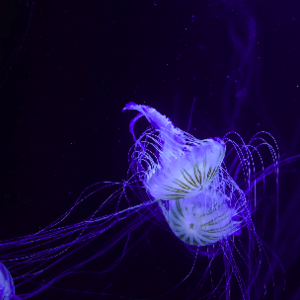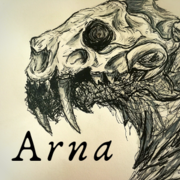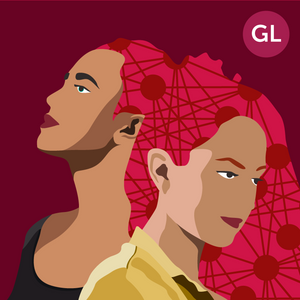The file Helena had sent me, through an encrypted channel and labeled “The Beauty And The Beast” was actually a diagram, of a type I knew well. Once, when I was thirteen years old, I worked with my father on a mouse replica. I had spent the better part of my winter vacations trying to figure out hundreds of pages of diagrams that looked a lot like that one.
You can’t really draw a diagram of a connectome. It’s far too much data. Even a mouse’s connectome is too big to put in paper. Fortunately, I didn’t have to, because there’s both software and hardware available entirely dedicated to automatizing the process. The real labor is input and output.
A replica’s eyes are specialized cameras, which need to be wired so they’ll appropriately decompose each pixel of input into several types of electric signals that will each reach the necessary neuron. Likewise, each region of a replica’s skin has numerous sensors that mimic the behavior of an animal’s receptors for things like hot and cold, vibration, pain and mechanical touch. A faithful replica has to reproduce all of those. There’s also auditory processing coming from the inner ear, acceleration from the vestibular system, thousands of different types of receptors for smell, spatial position of each part of the body, not to mention all kinds of chemical signals from hormones which need to be emulated. Visceral sensitivity, of course, is often glossed over, since replica don’t use energy from food, and most of these processes aren’t crucial for the connectome to work. Replicating everything for a specific animal will require some deep understanding of that animal’s physiology, it’s no simple task, and even with the availability of ready-made hardware and software for mice connectomes, I was only able to create Freddie because dad did most of the work.
(And I didn’t even begin to touch the issue of motor control and voice synthesis, which are also very complex subjects themselves).
What Helena had sent me was a single page of diagram, which described, very broadly and skipping all detail, the main input pathways of a human replica. Detailed information would, of course, be covered in hundreds of other pages of diagram.
On top of the page, there was the Cyan Four Laboratories logotype. Among the lines of text in the header, one in particular caught my attention.
Product: Helena Norwood (index #154)
So Helena hadn’t sent me a random page of diagram from someone’s replication. She had sent me the main input diagram for herself.
Like hell she would have sent me this by mistake. She was trying to tell me something. But… what?
“Damn it,” I cursed, as I realized I’d have to go back to studying connectomes if I wanted to understand this. I began digging around on my old files, searching for the stuff from my school project. “Four years,” I told myself, “four years running from this shit and look where I am now.”
I located it, hidden somewhere in my past under the “Freddie” directory. From there it was easy to find the diagrams. Dad had got them for me from a Swedish research team.
I opened the main input diagram.
Off the bat there were some clear similarities, but also some very striking differences. Probably the oddest thing you’d find, if you had never before worked with mice connectomes, or mice physiology, is that mice have (proportionally to the rest of their brains) a substantially large cortical representation of their whiskers, which humans obviously lacked. Rods and cones in the retina worked somewhat differently for mice, too, and the same goes for pretty much all other senses.
But there were also similarities, and my guess was that if I could once more understand how Freddie’s input map worked, I could probably transfer that knowledge into deciphering Helena’s input map.
I stopped for a bit, went downstairs, made myself a large mug of coffee and walked upstairs again. It was twelve past midnight, and I had just decided I’d be skipping school that day.
As I read through the diagrams, I found hundreds of notes written either by my father (for me) or me (for myself). At some point I started to cry, memories flooding back to me with each note. I cried for maybe an hour, and I only managed to stop fifteen minutes after I had chosen to close Freddie’s files.
“I can’t do this,” I told myself.
I decided to take another shower, to clear off my head and maybe cry some more, if I needed to. Then I made myself more coffee, and went upstairs to give Helena’s file another go.
Maybe it did work to spend so much time re-reading the diagrams I used for Freddie, because as soon as I opened Helena’s input map, I noticed something odd that I had completely failed to perceive up to that point.
There was a pair of relay stations in the paths between Helena’s cameras (eyes) and her connectome. After a moment, I found a second pair of relay stations, this time between her microphones (inner ears) and the connectome.
Oddest still, each of those sent a wire down to a small device somewhere on her thorax, labeled “R Unit”.
None of this was necessary for a replica to work. I had never seen it in an animal replica diagram before.
My first guess was that it did some sort of audiovisual processing before sending the information to the connectome. If so, what kind of processing? Could it be that human connectome systems required additional processing from eye cameras and inner ear microphones before it could be interpreted by neurons in the connectome?
I tried searching the net for “R Unit in human connectomes”. “R Unit” was obviously just a label on the diagram, and it could mean absolutely nothing, but I had no other lead to work on, so it was worth a try. Still, after half an hour scrutinizing academic papers, I found nothing at all of use.
Then I tried broader terms, variants of the name, until I got to a paper titled:
Lion Tamarin Behavioral Insights from Recording Units in Lion Tamarin Connectomes
“R Unit”. Could it be a recording unit?
Unfortunately, there were no input diagrams of lion tamarins in the paper. What was there, in fact, was a description of relay stations in both the visual and the auditory systems that sent a copy of the input data to a secondary CPU (primary being the connectome), called a Recording Unit. There, the four streams of data were merged into 3D low-resolution video, which was stored in a memory drive. The device then made periodic attempts to connect to a satellite network, in order to broadcast the data.
The paper was signed by nineteen different researchers. I went through the list, carefully checking each author’s other works. I wanted to get my hands on the input diagram of that lion tamarin replica from the first paper.
It wasn’t long until I found it. Not as a paper, but as a website. The Lion Tamarin Connectome Project. I found that they had a database of papers written in the topic of lion tamarin replicas. One of these, by two authors whose names hadn’t yet showed up in my research, had a detailed description of a proposed recording unit for analyzing jungle species data and lion tamarin behavioral data. Included, a simplified diagram of lion tamarin inputs, with relays on both visual and auditory channels, leading to a small device inside its chest called an “R Unit”.
I sat back, astounded.
I couldn’t believe what I had just found.
Worse of all, the depiction of the recording unit in the tamarin diagram I found looked exactly like the one in Helena’s input diagram. Her “Beauty And The Beast”. It would be hard to write this off as a coincidence.
So, if I was right, what Helena was trying to tell me is: “I can’t talk to you about your father’s death, because everything I see and hear is recorded and broadcast to the laboratory that owns me.”
And just then I remembered Helena saying, “I can’t say that I know any more than you do about this”.
You can’t say it.
But you know.










![[Dropped] What makes you you ~ GL](https://us-a.tapas.io/sa/1b/e3a7c1ff-6a96-4108-8eec-bb6b3abdfb2d.png)

Comments (2)
See all